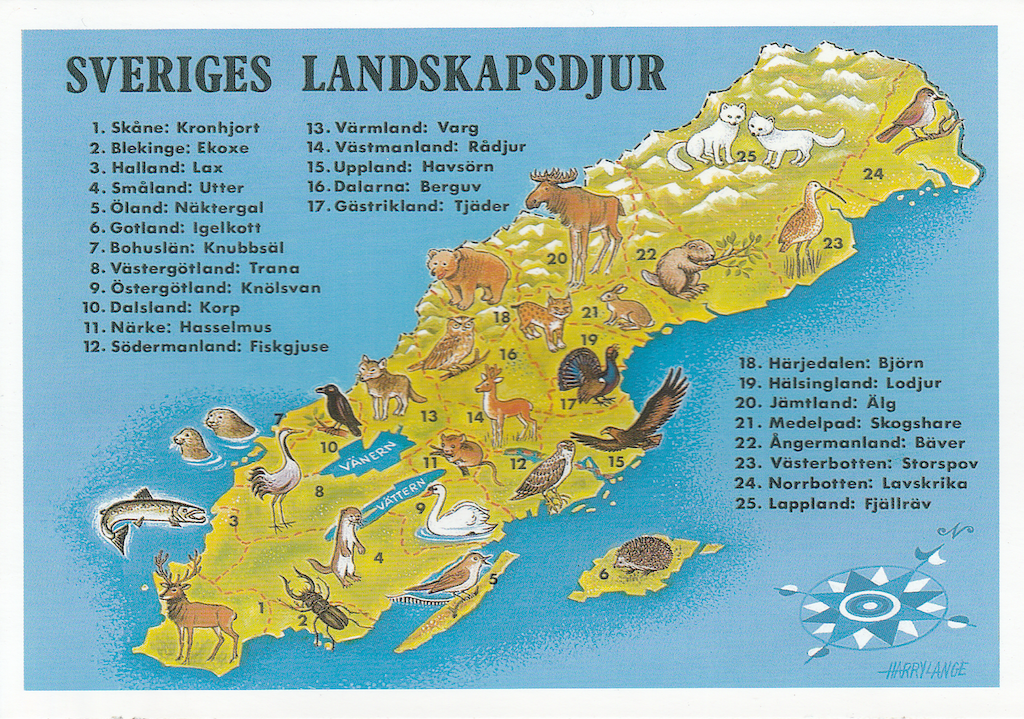Swedish Animals by Province – Svenska landskapsdjur Posted by Chelsea B on Mar 24, 2020 in Culture, Uncategorized, Vocabulary
Although it is now technically spring, there is still plenty of snow on the ground where I live. As the snow melts, I have noticed the forest creatures are much more active. The deer are looking for the first patches of grass to nibble on, and the birds are busy cleaning out their nests. I like to imagine they are as excited as I am that warm weather is on its way! Did you know that each Swedish landskap has an official animal? The illustration below is the inspiration for this week’s post! We’ll learn about Swedish animals by province, as well as fun super-duper fun facts provided by Skansken in Stockholm.
Sweden has 25 landskap, or provinces in English. Each animal is listed below next to the landskap they represent with its singular and plural forms, as well as English translation, enjoy!
Facts from Skansen.se:
Visste du att…?! Did you know that…?
Berguven är den största och tyngsta av världens ugglor.
The Eagle Owl is the largest and heaviest eagles in the world.
Lodjurets latinska namn “Lynx” betyder “lysa.” Enligt gammal folktro skulle lodjurets päls kunna lysa i mörkret.
The lynx’s latin name means “to shine.” According an old folk belief, the lynx’s fur could shine in the dark.
Björnen ställer sig ofta på bakbenen för att få en bättre bild av vad den har framför sig. Detta är inget hotbeteende.
The bear often stands on its backlegs to get a better picture of what is in front of it. This is not a threatening behavior.
En utter kan vissla! Men det gör den bara vid parningen och när den har ungar.
An otter can whistle! But it only does it when mating and with its young.
År 1689 jagades varg på Djurgården i Stockholm.
Wolves were hunted in the year 1689 on Djurgården in Stockholm.
En knubbsäl kan dyka ner till 200 meters djup och stanna under vattnet upp till 45 minuter!
A seal can dive down to a depth of 200 meters and can stay under water for up to 45 minutes!
Det är bara älgtjurarna som har horn. De fälls varje vinter och växer ut igen på några månader.
Only the moose bulls have horns. They fall every winter and grow again in a few months.
Which Swedish landskapsdjur is your favorite? Write your comment below!

Build vocabulary, practice pronunciation, and more with Transparent Language Online. Available anytime, anywhere, on any device.




























